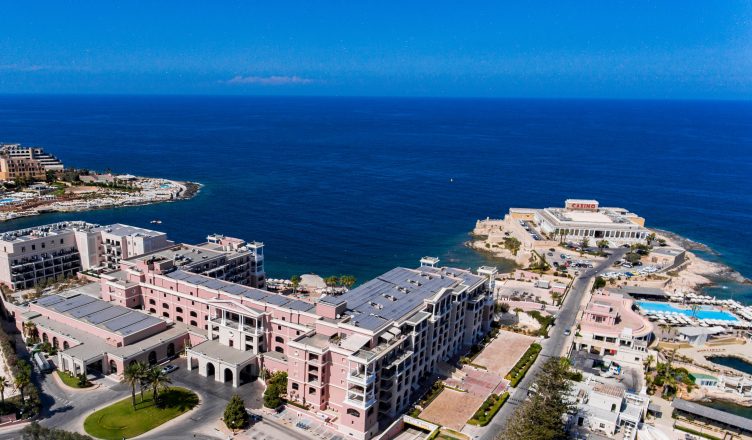When you picture a casino, you probably think of flashing lights, the clinking of slot machines, and the thrill of the game. What you likely don’t imagine is the colossal amount of energy required to power that 24/7 spectacle. The environmental footprint of these entertainment giants is, well, massive. It’s a side of the industry that often stays hidden behind the velvet ropes.
Let’s pull back that curtain. We’re going to explore the real cost of land-based casinos—not in dollars, but in environmental impact. And more importantly, we’ll look at the innovative, sustainable alternatives that are changing the game for the better.
The Not-So-Green Felt: Unpacking the Casino Footprint
Think of a major casino resort as a small, incredibly energy-intensive city. It never sleeps. The lights are always on, the HVAC systems are constantly battling the heat generated by thousands of people and machines, and the water is always flowing. This operation comes with a steep environmental price tag.
Energy Consumption: A 24/7 Drain
This is the big one. Casinos are energy hogs. A single large casino can use enough electricity to power thousands of homes annually. Where does all that power go?
- Lighting: Acres of interior space illuminated by countless bulbs, not to mention the massive exterior signs and marquees designed to be seen for miles.
- Slot Machines and Electronics: Thousands of machines, each with its own monitor and internal computer, running non-stop. They also generate significant heat, which leads to…
- HVAC Systems: Enormous heating, ventilation, and air conditioning systems working overtime to keep the crowded, windowless environments comfortable. This is often the single biggest energy expense.
Water Usage and Waste
From lavish fountain displays and sprawling pools to every hotel room bathroom and restaurant kitchen, water usage is astronomical. The landscaping alone for these large properties often requires immense amounts of irrigation, especially in desert hubs like Las Vegas. This places a huge strain on local water resources.
Construction and Material Waste
Building a casino isn’t a light undertaking. The construction process involves vast quantities of materials—concrete, steel, glass, and interior finishes like carpet and furniture that have a limited lifespan. The constant theme changes and renovations in casinos generate a staggering amount of waste that often ends up in landfills.
Dealing a New Hand: The Rise of Sustainable Casino Practices
Okay, so the picture seems pretty bleak. But here’s where it gets interesting. Facing pressure from regulators and a growing eco-conscious public, the industry is starting to clean up its act. Some operators are leading the charge with genuinely impressive green initiatives.
Energy Efficiency and Renewable Power
Forward-thinking casinos are investing heavily in retrofits. They’re swapping out old lighting for super-efficient LEDs, installing smart building management systems to optimize HVAC use, and upgrading to energy-star rated appliances.
The real game-changer? On-site renewable energy. Several casinos have installed massive solar arrays on their rooftops and over parking lots. These solar canopies, honestly, are a brilliant move—they generate clean power and provide shade for guests’ cars. Some properties are even purchasing enough wind or solar energy credits to offset their entire operational footprint.
Water Reclamation and Waste Reduction
Water-saving low-flow fixtures are becoming standard. Many casinos are treating and reusing “greywater” (from sinks and showers) for irrigation and those iconic fountains. There’s also a bigger push towards xeriscaping—using native, drought-resistant plants for landscaping instead of thirsty grass.
On the waste front, robust recycling programs are being implemented for glass, plastic, and cardboard. Some are even getting creative, finding partners to repurpose old slot machines, carpet, and furniture instead of trashing them.
The Digital Alternative: Is Online Gaming Greener?
This is the million-dollar question. When you choose to play a game on your phone or computer instead of driving to a physical casino, what’s the environmental trade-off?
Well, the carbon footprint of online gambling is undoubtedly different. It eliminates the need for giant buildings, travel emissions from patrons, and all the associated infrastructure. The impact is centralized in data centers and the devices we use.
That said, data centers do consume a significant amount of energy for computing and cooling. The key, much like with physical casinos, is how that energy is sourced. Reputable online casinos are increasingly hosted by cloud providers committed to powering their servers with renewable energy. When you combine that with the elimination of travel and physical infrastructure, the carbon footprint per gambler is almost certainly lower.
It’s not a perfect solution—nothing is—but it represents a dramatic reduction in overall environmental impact. It’s a shift from a resource-heavy collective experience to a distributed, digitally efficient one.
What Does the Future Hold? Betting on Green
The trend is clear: sustainability is becoming a core part of the business model, both online and off. For land-based casinos, achieving LEED certification (a leading green building rating) is a growing badge of honor. It signals to guests that the company is thinking about the future.
We’re also seeing a rise in “green gamification.” Some operators offer rewards or loyalty points for patrons who opt for digital receipts, refuse daily towel service, or use EV charging stations. It’s a smart way to engage customers in the sustainability mission.
The most successful properties of tomorrow won’t just be palaces of chance; they’ll be models of efficiency and environmental responsibility. They’ll have to be. Consumers are increasingly voting with their wallets for businesses that align with their values.
So, the next time you’re considering a night out at the tables or a few spins on the slots, maybe think about the hidden costs. The choice between a sprawling physical resort and a digital platform isn’t just about convenience anymore. It’s also a choice about what kind of footprint you want to leave behind. And that’s a bet worth making.

